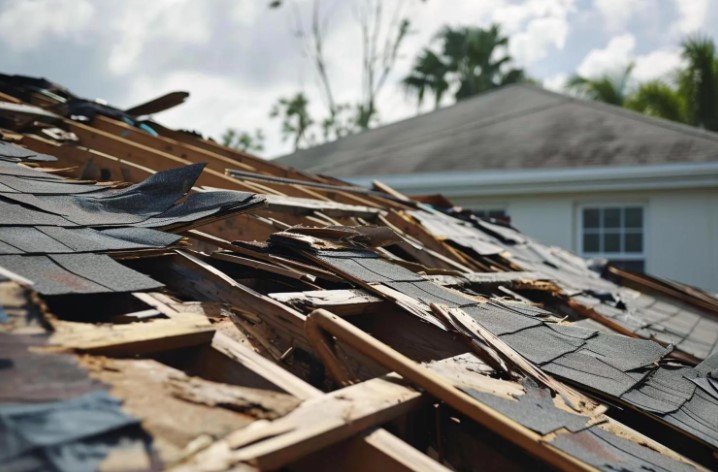
Weathering the Storm: Essential Insights for Filing Roofing Insurance Claims
Table of Contents
- Overview of Roofing Insurance Claims
- Common Causes of Roof Damage
- Initial Steps After Roof Damage
- Navigating the Claims Process
- Documentation Needed for Claims
- Interpreting Your Insurance Policy
- Tips for a Successful Claim Experience
- Avoiding Common Pitfalls
Overview of Roofing Insurance Claims
The claims process can feel overwhelming, especially when dealing with the emotional and financial stress caused by damage to your home. Understanding the basics of effectively engaging with insurance companies can ease the burden. By familiarizing yourself with the process, you empower yourself to ensure your home’s protection remains uncompromised, paving the way for timely and fair compensation.
Common Causes of Roof Damage
Weather plays a significant role in the wear and tear of roofs. Among the most notorious culprits are hailstorms, hurricanes, and heavy rainfalls, all of which can cause substantial damage in hours. Hailstones can batter shingles, high winds can peel them back, and rain can seep into unseen cracks, leading to leaks and further structural damage. In the aftermath of a storm, filing roofing insurance claims becomes crucial for many homeowners. Understanding why storms affect roof integrity is essential for homeowners aiming to safeguard their property. Such insights not only prepare you for potential damage but also guide your decisions when assessing the condition of your roof post-storm.
Initial Steps After Roof Damage
Acting promptly after roof damage is crucial in mitigating further problems. Begin by ensuring everyone’s safety, then arrange for a professional inspection. This first step provides an expert evaluation of the damage and helps prevent worsening conditions. Capture the state of your roof through photographs and detailed notes. This documentation serves two purposes: it creates a record for insurance purposes and helps guide the repair efforts. Additionally, take practical measures, like covering holes with tarps, to shield your home from the elements while awaiting repairs. These steps can prevent minor issues from escalating into significant restorations, including necessary exterior painting to restore your home’s appearance once repairs are completed.
Navigating the Claims Process
Understanding and methodically navigating the claims process is vital to ensure your claim’s success. Once you discover damage, immediately notify your insurer. Clear communication establishes a good precedent for the claim’s proceeds. Be sure to follow your insurer’s specific procedures, as laid out in your policy. These often include scheduling inspections and submitting necessary documentation. By adhering to their established timeline and requirements, you streamline the experience, minimizing potential delays or disputes.
Documentation Needed for Claims
Thorough documentation can make all the difference when filing a claim. Everything from photographs and repair estimates to detailed descriptions of the damages is vital in supporting your case. These elements give concrete evidence to your insurer, ensuring there’s no ambiguity regarding the extent of the damage. Organized records can prevent potential delays, aiding the adjuster in assessing your claim swiftly and fairly. Accurate and comprehensive documentation acts as your claim’s backbone, ensuring it stands firm against any scrutiny it may face.
Interpreting Your Insurance Policy
Insurance policies often contain dense language, which can be challenging to interpret. However, a thorough understanding of your policy is imperative. Familiarize yourself with key terms and coverage details, as these dictate what is and isn’t covered during claim submission. Knowing these intricacies can prevent misunderstandings and ensure you know your rights and entitlements. To help with this, many resources offer guidance on reading and understanding policies effectively. This preparation prevents potential disputes later on, smoothing out the claims process.
Tips for a Successful Claim Experience
Effective communication with your insurer is paramount for a smoother claims experience. Always aim for clear and concise interactions, especially when providing information or documents. Adhering to all timelines and consistently following up with your insurance adjuster demonstrates your commitment and attentiveness. This proactive approach often results in a more favorable outcome. Additionally, feel free to ask questions if they are unclear; doing so averts potential misunderstandings that could derail the process.
Avoiding Common Pitfalls
Embarking on the claims process without adequate preparation can lead to several pitfalls. Common mistakes include insufficient documentation and a poor understanding of policy coverage. To avoid these, maintain an organized approach and ensure you are well-informed about your policy’s specifics. These precautions ensure clear communication and prevent unnecessary complications, significantly impacting your claim’s efficiency and overall success. Avoiding these pitfalls sets a strong foundation for a smooth and effective claim process.



